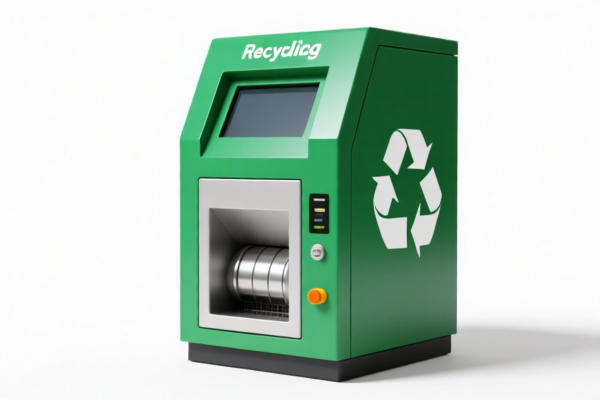| HS Code | Official Doc | Tariff Rate | Origin | Destination | Effective Date |
|---|---|---|---|---|---|
| 8445400000 | Doc | 41.2% | CN | US | 2025-05-12 |
| 8487900080 | Doc | 83.9% | CN | US | 2025-05-12 |
| 8487900040 | Doc | 58.9% | CN | US | 2025-05-12 |




Reeling Machine
A reeling machine is a device used to wind yarn or thread from a supply package – such as a bobbin or spool – onto a receiving package, typically a bobbin, spool, cone, or tube. The process is known as reeling. It is a fundamental operation in textile manufacturing, crucial for preparing yarn for weaving, knitting, and other downstream processes.
Materials
Reeling machines are constructed from a variety of materials, selected for durability, precision, and the types of yarn they will handle. Common materials include:
- Metal (Steel, Stainless Steel, Aluminum): Used for the frame, gears, shafts, and structural components due to strength and stability. Stainless steel is preferred when dealing with delicate or dyed yarns to prevent corrosion or staining.
- Plastics (Polypropylene, Nylon): Employed for guides, rollers, and other components requiring low friction and minimal yarn damage.
- Rubber: Used for pressure rollers to provide controlled tension and grip.
- Electronic Components: Modern machines utilize electronic sensors, motors, and controllers for precise speed and tension control.
Purpose
The primary purpose of a reeling machine is to:
- Transfer Yarn: Move yarn from a larger, unwieldy package to a smaller, more manageable package suitable for use on weaving looms, knitting machines, or embroidery equipment.
- Create Consistent Packages: Produce packages with uniform length, density, and winding pattern, essential for efficient processing and consistent product quality.
- Build Package Strength: Wind yarn in a way that creates a strong, compact package capable of withstanding the stresses of transportation and use.
- Introduce Tension: Apply controlled tension during winding to ensure proper yarn density and prevent defects.
Function
The basic function of a reeling machine involves several key steps:
- Yarn Delivery: Yarn is fed from the supply package through a series of guides and tension control devices.
- Tension Control: A tension device (e.g., disc brake, magnetic tensioner) maintains a consistent force on the yarn.
- Winding: The yarn is wound onto the receiving package via a winding head that traverses back and forth across the package surface.
- Package Control: Sensors and controls regulate the winding speed, traverse speed, and package diameter.
- Take-Up: A take-up mechanism drives the receiving package rotation, ensuring consistent yarn layering.
- Automatic Stop: Most machines include automatic stop mechanisms when the receiving package reaches a pre-set size or when yarn breaks.
Usage Scenarios
Reeling machines are used in a wide range of textile manufacturing environments:
- Yarn Manufacturing Plants: Used to wind yarn produced from fibers (cotton, wool, silk, synthetic fibers) onto cones or bobbins for sale to weavers and knitters.
- Weaving Mills: Used to prepare yarn for weaving looms, ensuring consistent yarn supply and package size.
- Knitting Mills: Used to prepare yarn for knitting machines, creating packages suitable for automated knitting processes.
- Embroidery Factories: Used to prepare yarn for embroidery machines.
- Textile Dyeing and Finishing Plants: Used to rewind yarn after dyeing or finishing processes.
Common Types
Several types of reeling machines are available, categorized by their level of automation, yarn handling capabilities, and specific features:
- Manual Reeling Machines: Simple, hand-operated machines used for small-scale production or sample winding.
- Semi-Automatic Reeling Machines: Require some manual operation, such as package changing, but automate the winding process.
- Automatic Reeling Machines: Fully automated machines that can continuously wind yarn from supply packages to receiving packages with minimal operator intervention. These often feature multiple spindles for increased production capacity.
- Precision Reeling Machines: Designed for winding high-quality yarns with precise tension control and uniform package density. Used for specialty yarns or applications requiring tight tolerances.
- Cone Winding Machines: Specifically designed for winding yarn onto cones, commonly used in weaving and knitting.
- Bobbin Winding Machines: Specifically designed for winding yarn onto bobbins.
- Pirn Winding Machines: Designed for winding yarn onto pirns, used in shuttle looms.
- High-Speed Reeling Machines: Used for high-volume production of yarn packages.
Reeling Machine Classification and Tariff Information
Based on the provided information, reeling machines fall under the classification of machinery for preparing textile fibers and producing textile yarns. Here's a detailed breakdown of relevant HS codes and associated tariff details:
- 8445400000: This HS code covers “Machines for preparing textile fibers; spinning, doubling or twisting machines and other machinery for producing textile yarns; textile reeling or winding (including weft winding) machines and machines for preparing textile yarns for use on the machines of heading 8446 or 8447: Textile winding (including weft winding) or reeling machines”.
- 84: Chapter 84 pertains to Nuclear reactors, boilers, machinery and mechanical appliances; parts thereof.
- 45: Heading 45 specifically covers machines for preparing textile fibers.
- 400000: This subheading further narrows the classification to textile winding or reeling machines.
- Tariff Details: The base tariff is 3.7%, with an additional surcharge of 7.5%. After April 2, 2025, the surcharge increases to 30%, resulting in a total tariff of 41.2%.
According to the provided reference material, the HS code options related to 'reeling machine' are limited, with only the following 1 found.
Customer Reviews
No reviews yet.